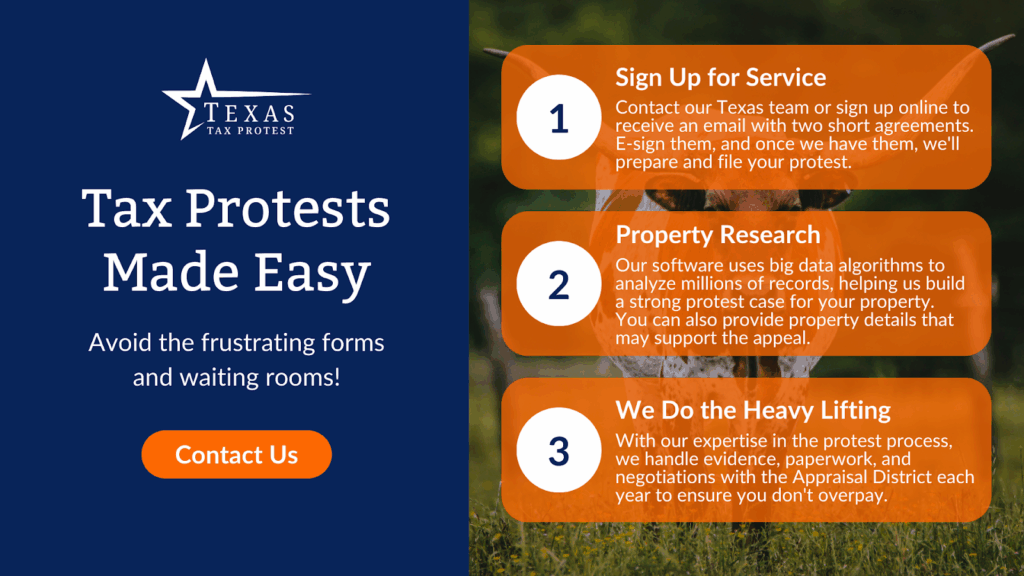
Non-Disclosure States in Real Estate: What It Means for Property Taxes in Texas
October 3, 2025
Key Takeaways:
- How Texas Adopted Non-Disclosure Protections: Texas law shields property owners by keeping real estate sale prices confidential under statutes like Tax Code § 22.27 and Government Code § 552.149.
- What Information Remains Private After a Real Estate Closing: Final sale prices, personal identifiers, and financial terms from your contract remain out of public records. This confidentiality creates opportunities for homeowners to build their own case with data instead of having their assessment tied to a single public sale figure.
- Tips for Gathering Reliable Market Evidence: Comps, careful adjustments, and documentation of condition all help form a stronger protest. In Texas, the extra effort in gathering public and private data can give homeowners an advantage.
Opening your annual property tax bill in Texas can feel like stepping into uncharted territory. Numbers may not match what you expected, and the reason often traces back to Texas being one of the few non-disclosure states. Here, the final sales price of a home isn’t part of the public record, setting our state apart from places like Florida or California, where sale data is openly shared.
For our team at Texas Tax Protest, this lack of transparency defines how appraisals are made and how protests succeed. While non-disclosure laws shield privacy, they also leave room for appraisers to estimate values using incomplete data. In this post, we’ll show you what living in a non-disclosure state really means, how it shapes your property tax assessment, and how our team can help you turn complicated rules into a fairer bill.
How Texas Adopted Non-Disclosure Protections
Texas legislators long valued property owner privacy when shaping real estate and taxation law. That preference meant the state never pushed for mandatory public disclosure of real estate sale prices as a default. Over time, confidentiality protections became baked into statute.
When Sales Data Stays Behind Closed Doors
A landmark statute, Texas Tax Code § 22.27, shields information that property owners provide to appraisal offices or the Comptroller under a confidentiality promise. When an owner voluntarily reports a sale price or related detail under a confidentiality agreement, that information must remain confidential and cannot be broadly disclosed.These protections create a safe channel for owners to share otherwise sensitive data with appraisal districts, while maintaining that data off the public record.
Where Public Access Stops
Texas’s broader public records regime is governed by Government Code Chapter 552, often called the Open Records Act. This law presumes government records should be available to the public, with certain exceptions.One crucial carve-out is § 552.149, which exempts certain real property sales data from disclosure. Under this law, information about real property sales, such as the sale price, description, or other characteristics, when received by a chief appraiser from a private entity, is “excepted” from the public disclosure requirement.
Modern Appraisal Challenges in Texas
These statutory protections have held over many legislative sessions. Today, most county appraisal districts operate knowing that sale price data is legally off-limits to public disclosure. That forces reliance on indirect sources, licensed vendor databases, MLS, broker-shared data, or voluntary owner disclosures that are kept confidential.
Since public access to sale prices is limited, appraisal districts must rely heavily on mathematical adjustments between comps to reconcile differences in lot size, condition, upgrades, age, and location. That dynamic makes accuracy in your own evidence and comparisons all the more critical.

What Information Remains Private After a Real Estate Closing
In Texas, the rules around real estate data keep several details out of the public eye. Our team sees this confidentiality as both a protection for property owners and a factor in how tax assessments get handled. Here’s what stays private once the ink dries:
- Final Sale Price: The agreed-upon purchase amount never becomes part of the public record. Appraisal districts don’t automatically see the price you paid, which means they must rely on other data sources when estimating market value.
- Personal Identifiers: Sensitive information like Social Security numbers, bank account details, and mortgage account numbers remains confidential. These never appear in the county’s public files.
- Financial Terms of the Deal: The negotiated pieces of your contract, such as seller concessions, repair allowances, or side agreements, aren’t recorded in public databases. Only the essentials make it onto the deed.
- Confidential Disclosures to Appraisal Offices: When owners share data directly with appraisal districts under a confidentiality agreement, that information stays protected under state law. The district may use it internally, but they can’t release it publicly.
Pros and Cons of Non-Disclosure Rules for Home Sellers and Buyers
Navigating real estate in states with non-disclosure rules, like Texas, adds a unique set of twists for both sellers and buyers. These rules limit the public availability of property sales prices—setting the stage for both possibilities and pitfalls.
Pros for Home Sellers
- Greater Privacy: Non-disclosure laws offer sellers a layer of privacy around how much their home sold for. This is especially attractive for those who value discretion in one of life’s largest transactions.
- Strategic Advantage in Negotiations: When previous sales prices aren’t shared, future buyers can’t easily anchor their offers to earlier deals. This gives sellers more flexibility in setting their asking price and negotiating terms.
- Potential for Higher Sales Price: In some markets, a lack of transparent pricing data can help fuel competitive bidding. The scarcity of information sometimes nudges buyers to offer more than they might if they saw frequent price drops on similar homes.
Pros for Home Buyers
- Negotiation Leverage: For buyers willing to dig deeper, the ambiguity of non-disclosure states creates room to negotiate. Well-informed buyers, often working with skilled professionals, can spot mismatched asking prices, arming themselves for price discussions.
- Protection Against Overvaluation: Without a fixed precedent available to everyone, buyers may find leverage if they suspect a listing is priced above nearby properties.
Cons for Home Sellers
- Unpredictable Comparisons: Appraisers still need to value properties, and non-disclosure means they might work with incomplete information. This can sometimes lead to lower appraisals if the comps aren’t public or recent enough, lowering the ultimate sales price.
- Fewer Data Points Mean More Guesswork: In a market rich with public sales data, pricing a property is straightforward. In a non-disclosure environment, sellers have to rely on Realtor advice, private data, and their gut, leaving room for error.
Cons for Home Buyers
- Lack of Transparent Pricing: One of the biggest downsides for buyers lies in the limited access to previous sales prices. This can make it tough to know if a home is truly priced fairly.
- Increased Reliance on Professionals: With less transparency, buyers frequently need to lean on agents or third-party data services to research historical sale prices and nearby comps. However, the quality of this information can vary.
- Harder Valuations for Tax or Financing Purposes: Non-disclosure makes the math trickier when it comes to property taxes or securing loans. Lenders and local appraisal districts must use available comps and adjust for square footage, amenities, age, and condition to extract a fair value.

Tips for Gathering Reliable Market Evidence for Your Tax Protest
Building reliable market evidence is the foundation of a strong property tax protest. In Texas, where real estate is protected under non-disclosure laws, sales prices aren’t automatically public. That makes the way you gather and present data especially important. With a little creativity and the right approach, you can build a compelling case for a lower assessed value.
Start with Comps
Recent sales of similar homes form the starting point for most tax protests. Focus on properties that mirror your home in age, square footage, layout, and overall condition. Local MLS data, real estate websites, and private insights from trusted realtors can all help. Aim for at least three to five comparable sales within the past year. In states like Florida, where prices appear in public records, this process is easier. In Texas, it takes more digging, but the effort often pays off.
Make Adjustments with Care
No two properties are identical, so adjustments matter. If one comparable has an updated roof, an extra bathroom, or a larger lot, subtract or add value to estimate where your property would stand with the same features. For instance, if a home sold for $20,000 more because it has a pool and yours doesn’t, reduce that value from your comparison. Then, square footage differences can be balanced on a per-foot basis using recent neighborhood sales.
Document Condition Issues and Upgrades
Clear documentation strengthens your protest. Photos of foundation cracks, roof damage, or outdated systems highlight why your property might warrant a lower value than a pristine neighbor’s home. At the same time, receipts for renovations or improvements give your evidence credibility. If a comparable had high-end finishes that your house lacks, spell that out and account for the difference.
Use Both Public and Private Sources
Gather evidence from as many channels as possible. County appraisal records, tax rolls, HOA newsletters, and online housing platforms often hold useful details. Sites like Redfin or Zillow may list estimates, and while those figures can be imprecise, they add context. When combined with privately shared data from local agents, these sources help create a fuller picture.
Present Your Case Clearly
Present your evidence in a logical, easy-to-understand format. Line up your comps on a table, include adjustment calculations, and back up every claim with documentation. A well-organized protest backed by rock-solid evidence increases the chance of a lower assessed value.

Final Thoughts
Texas’s status as a non-disclosure state shapes the way homeowners approach property tax protests. In states where sale prices appear in public records, such as California or Florida, the process looks very different. In Texas, however, the absence of automatic price disclosure creates both challenges and opportunities for building a strong case.
At Texas Tax Protest, our team’s mission is to simplify this process while standing alongside property owners. We combine advanced data analysis with personal guidance to make sure homeowners have the tools they need to argue for fairness. When non-disclosure rules create uncertainty, our team helps turn that uncertainty into leverage.
Read More:
- How Local School Districts and Governments Impact Your Property Taxes
- Texas Property Tax Relief Bills: Key Updates And Potential Savings
- What Really Happens During a Property Tax Protest Hearing?
Frequently Asked Questions About Non-Disclosure States in Real Estate
Why does Texas maintain a non-disclosure status?
Texas chooses to remain a non-disclosure state to protect homeowner privacy and maintain confidentiality for both buyers and sellers. Unlike some states that require disclosure of real estate sale prices, Texas law aims to limit publicly available information about what properties sell for. This approach reflects longstanding Texas values around property rights and personal privacy.
How do Texas appraisal districts value property without disclosed sales prices?
Appraisal districts in Texas rely on a blend of public data, MLS information when available, and informed mathematical adjustments between comparable properties. Analysts make educated estimates by using property characteristics, location, neighborhood trends, and any available voluntary disclosures. Adjustments are carefully calculated for differences so appraisals are as accurate as possible, even when sale prices aren’t public.
What data do Texas tax assessors use if sale prices are not public?
Tax assessors in Texas utilize a mix of property characteristics, recent construction costs, local market trends, and data from third-party providers. Where possible, they may obtain information from MLS data, brokers, or voluntary disclosures from recent buyers or sellers. Even without public sales prices, assessors gather details on nearby amenities, home improvements, and market activity to triangulate a fair value for tax purposes.
Does non-disclosure lead to inaccurate property tax appraisals in Texas?
Non-disclosure can present challenges, but it doesn’t automatically translate to inaccurate appraisals. Skilled appraisal districts use sophisticated modeling and multiple data sources to fill the gaps left by absent public sales prices. Mathematical adjustments between comps help create reasonable estimates, but from time to time, discrepancies do appear.
What is the penalty for disclosing a sales price in a non-disclosure state like Texas?
Texas law restricts public entities from requiring the disclosure of sale prices, but there’s no explicit penalty for an individual voluntarily sharing a sales price with a non-government entity. Still, title companies, real estate agents, and other professionals typically follow professional standards for confidentiality.
Can county appraisers access sales data in Texas?
County appraisers in Texas often have limited access to individual sales data. While appraisal districts may negotiate with MLS or other databases for partial access, this information is rarely complete. Appraisers may also receive sales price information when voluntarily provided by buyers, sellers, or real estate professionals, but property owners are not legally required to share this data.
Sources:
- https://statutes.capitol.texas.gov/Docs/TX/htm/TX.22.htm#22.27
- https://statutes.capitol.texas.gov/docs/GV/htm/GV.552.htm





